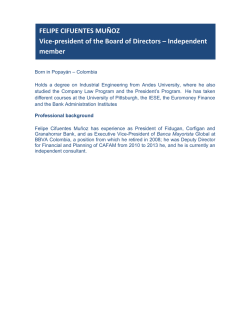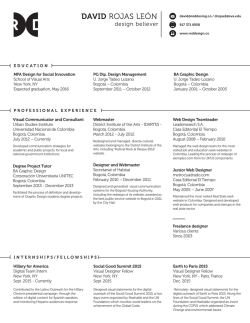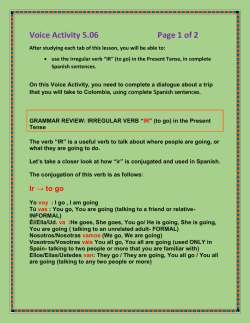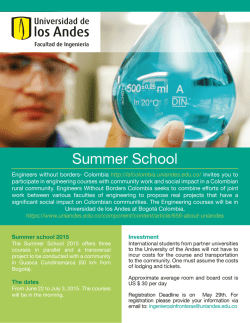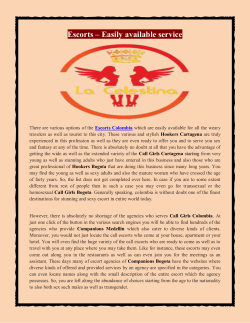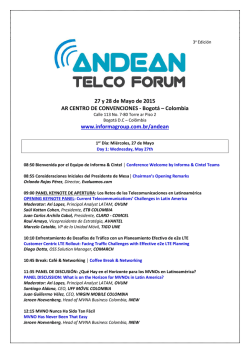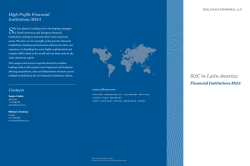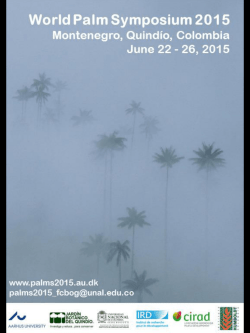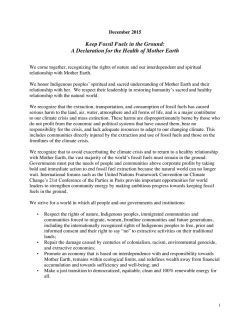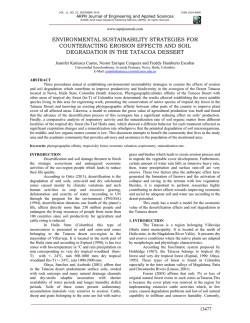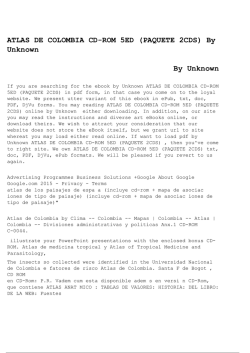
Nine new records of Odonata for Colombia from the
97 Nine new records of Odonata for Colombia from the Orinoco ĂƐŝŶ;>ĞƐƟĚĂĞ͕ĂůŽƉƚĞƌLJŐŝĚĂĞ͕,ĞƚĞƌĂŐƌŝŽŶŝĚĂĞ͕ŽĞŶĂŐƌŝŽŶŝĚĂĞ͕ Libellulidae) Cornelio Andrés Bota-Sierra Grupo de Entomología Universidad de Antioquia (GEUA), Medellín AA 1226, Colombia; [email protected] Abstract. Twelve species new for Meta department, Colombia, are listed, among which nine represent new records for Colombia. These are Telebasis rubricauda Bick & Bick, 1995, Lestes helix Ris, 1918, Lestes jerrelli Tennessen, 1997, Lestes minutus Selys, 1862, Heteragrion bariai De Marmels, 1989, Oxystigma cyanofrons Williamson, 1919, Misagria parana Kirby, 1889, Perithemis thais Kirby, 1889, and Zenithoptera lanei Santos, 1941. Key words. Odonata, new records, Meta department, Colombia Introduction The Colombian Orinoco basin region is located on the eastern slope of the Andean Cordillera Oriental, and at the north of the Amazon basin slightly separated by plateaus of Guianan Shield origin (Rosales et al. 2010). This region has a great biodiversity in part due to its broad altitudinal range, from 40 m to 5,330 m a.s.l., which creates a scenario for numerous ecosystems, dominated by the lowland ecosystems of tropical forest (37,4 %) and prairies (53,9 %) (Correa et al. 2005). Despite the great richness of the basin, the Odonata of this region is poorly known and there are only four publications with faunistical records (Rojas & Sánchez 2009; AmayaPerilla & Palacino-Rodríguez 2012; Rache et al. 2013). Material and method Data presented here comprise the results of a revision of material deposited at the Instituto de Ciencias Naturales-Museo de Historia Natural de la Universidad Nacional de Colombia (ICN-MHN) and collections made by Cintia Moreno Arias (CMA). List of collecting sites (1) Reserve Mataredonda y Rey Samuro, Department Meta, Municipality San Martín (03°32’30” N, 73°21’26” W, 260 m a.s.l.). Morichal i.e. permanent flooded ‘sabana’, dominated by the palm Mauritia flexuosa. (2) Río Ocoa, Caño Grande, 400 m a.s.l. (3) Acacías, Finca Versalles. (4) Reserve Mataredonda y Rey Samuro, Department Meta, Municipality San Martín (03°32’30” N, 73°21’26” W). Forested stream (5) Reserve Mataredonda y Rey Samuro, Department Meta, Municipality San Martín (03°32’30” N, 73°21’26” W). Flooded forest (6) San Martin, Finca Resguardo Caduceo, 393 m a.s.l. (7) Guamal, 550 m a.s.l. Notulae odonatologicae 8(4) 2014: 77-116 98 Results Twelve species new for Meta department are listed below. New species for Colombia are marked with an asterisk. If not stated otherwise, specimens have been collected by CMA. The topographic position of the localities is provided in Fig. 1. Family Calopterygidae 1. Mnesarete fulgida (Selys, 1879) (2) 1ƃ 10-iii-1945, leg. L. Richter. Family Coenagrionidae 2. *Telebasis rubricauda Bick & Bick, 1995 (1) 2ƃ 07–14-vi-2014. 3. Telebasis salva (Hagen, 1861) (1) 1ƃ 07–14-vi-2014. Family Lestidae 4. *Lestes helix Ris, 1918 (3) 1ƃ 18-iv-2004, leg. unknown. &ŝŐ͘ϭ͘dŽƉŽŐƌĂƉŚŝĐƉŽƐŝƟŽŶŽĨƚŚĞůŽĐĂůŝƟĞƐŽĨƚŚĞŶŝŶĞƐƉĞĐŝĞƐŶĞǁůLJƌĞĐŽƌĚĞĚĨŽƌŽůŽŵďŝĂ͘ůƵĞ͗ŽůŽŵďŝĂŶKƌŝŶŽĐŽďĂƐŝŶƌĞŐŝŽŶ͖;ϭͿZĞƐĞƌǀĂƐDĂƚĂƌĞĚŽŶĚĂLJZĞLJ^ĂŵƵƌŽ͖(2) Río KĐŽĂ͕ĂŹŽ'ƌĂŶĚĞ͖(3)ĐĂĐşĂƐ͖(6)^ĂŶDĂƌƟŶ͖(7)'ƵĂŵĂů͘ Notulae odonatologicae 8(4) 2014: 77-116 99 5. *Lestes jerrelli Tennessen, 1997 (1) 1ƃ 7-14-vi-2014. 6. *Lestes minutus Selys, 1862 (1) 2ƃ 7–14-vi-2014. Family Heteragrionidae 7. *Heteragrion bariai De Marmels, 1989 (4) 3ƃ 1Ƃ 7–14-vi-2014. 8. *Oxystigma cyanofrons Williamson, 1919 (2) 3ƃ 10-iii-1945, leg. L. Richter. Family Libellulidae 9. *Misagria parana Kirby, 1889 (5) 1Ƃ 7–14-vi-2014. 10. *Perithemis thais Kirby, 1889 (5) 2ƃ 7–14-vi-2014. 11. Zenithoptera lanei Santos, 1941 (6) 3ƃ 1Ƃ 09-xii-2006, leg. unknown students. 12. *Zenithoptera viola Ris, 1910 (7) 1ƃ 10-xii-1985, leg. D. de Arevalo. Discussion Most of the work done in this region has been concentrated in Meta department, leaving the Andean slope and the other departments: Arauca, Casanare and Vichada, almost unexplored with only eight records for Casanare and none for the other departments (Pérez-Gutíerrez & Palacino-Rodríguez 2011). It makes this rich region a potentially good place for finding new and interesting Odonata species. Acknowledgements. To Cintia Moreno Arias for the collections in San Martin; to Fernando Fernandez curator of ICN-MHN collection for allow me to review the collection; to Camilo Flórez and Fredy Palacino for critical reading; to Asmus Schröter for critical reading and edition of the manuscript; and to GEUA for logistic support. References Amaya-Perilla C. & Palacino-Rodríguez F. 2012. An updated list of the Dragonflies (Odonata) of Meta Department, Colombia, with forty-six new department records. Bulletin of American Odonatology 11: 29-38 Correa H. D., Ruiz S. L. & Arévalo L. M. (Eds). 2005. Plan de acción en biodiversidad de la cuenca del Orinoco – Colombia/2005-2015 – Propuesta Técnica. Bogotá D.C.: Corporinoquia, Cormacarena, I.A.v.H, Unitrópico, Fundación Omacha, Fundación Horizonte Verde, Universidad Javeriana, Unillanos, WWF – Colombia, GTZ – Colombia. Notulae odonatologicae 8(4) 2014: 77-116 100 Pérez-Gutíerrez L.A. & PalacinoRodríguez F. 2011. Updated checklist of the Odonata known from Colombia. Odonatologica 40: 203-225 Rache L., Acero A., Alfonso S. & Rincón-Silva J.D. 2013. Primer registro de los géneros Diaphlebia Selys, 1854, Argyrothemis Ris 1909 y Fylgia Kirby, 1889 para Colombia (Odonata: Gomphidae, Libellulidae). Entomotropica 28: 95-97 Rojas N. & Sánchez M. 2009. New records of Acanthagrion Odonata: (Coenagrionidae) from Colombia. Bulletin of American Odonatology 11: 17-19 Rosales J., Suárez C.F. & Lasso C.A. 2010. Descripción del Medio Natural de la Cuenca del Orinoco. Chapter 3. 5073. In: Lasso C.A., Usma J.S., Trujillo F & Rial A. (Eds). 2010. Biodiversidad de la cuenca del Orinoco: bases científicas para la identificación de áreas prioritarias para la conservación y uso sostenible de la biodiversidad. Instituto de Investigación de Recursos Biológicos Alexander von Humboldt, WWF Colombia, Fundación Omacha, Fundación La Salle e Instituto de Estudios de la Orinoquia (Universidad Nacional de Colombia). Bogotá, D.C., Colombia. Received 27th August 2014 Notulae odonatologicae 8(4) 2014: 77-116
© Copyright 2025
